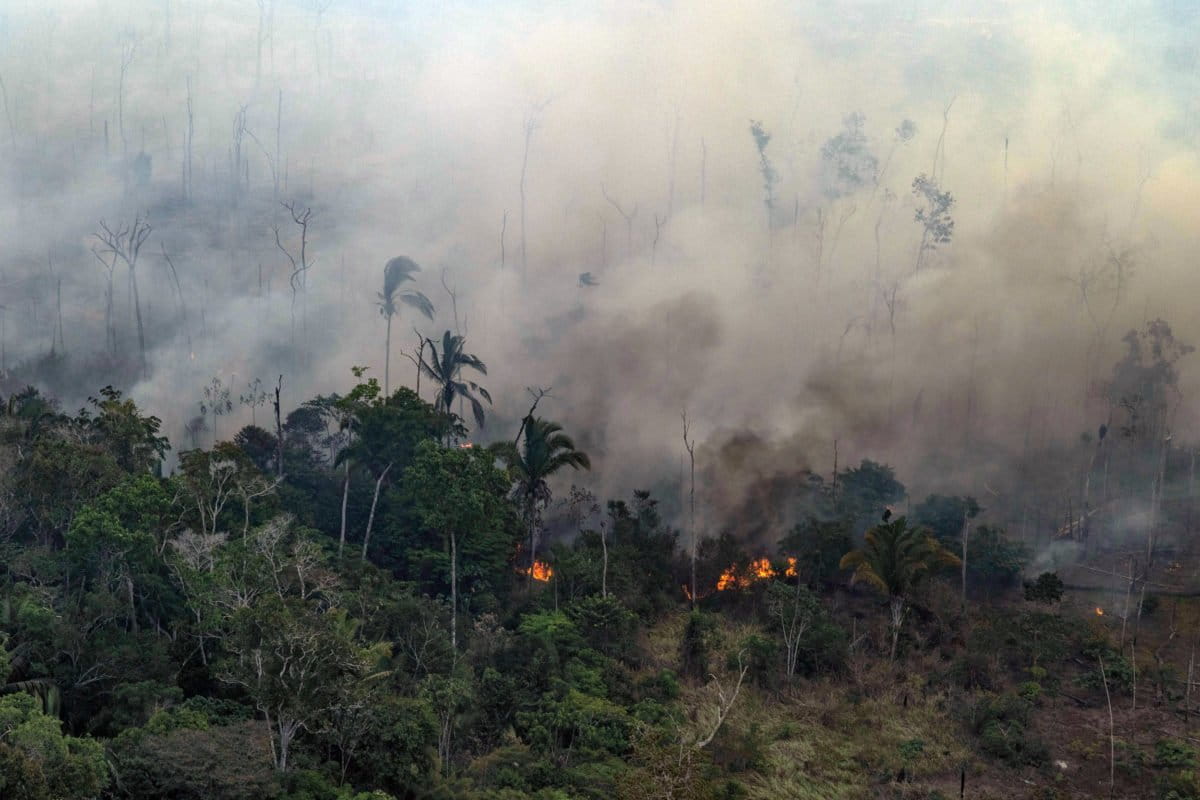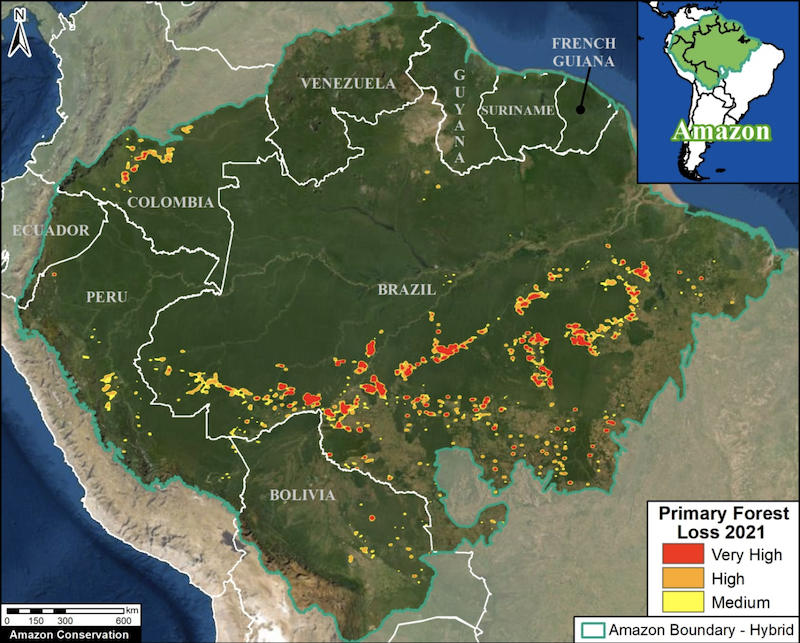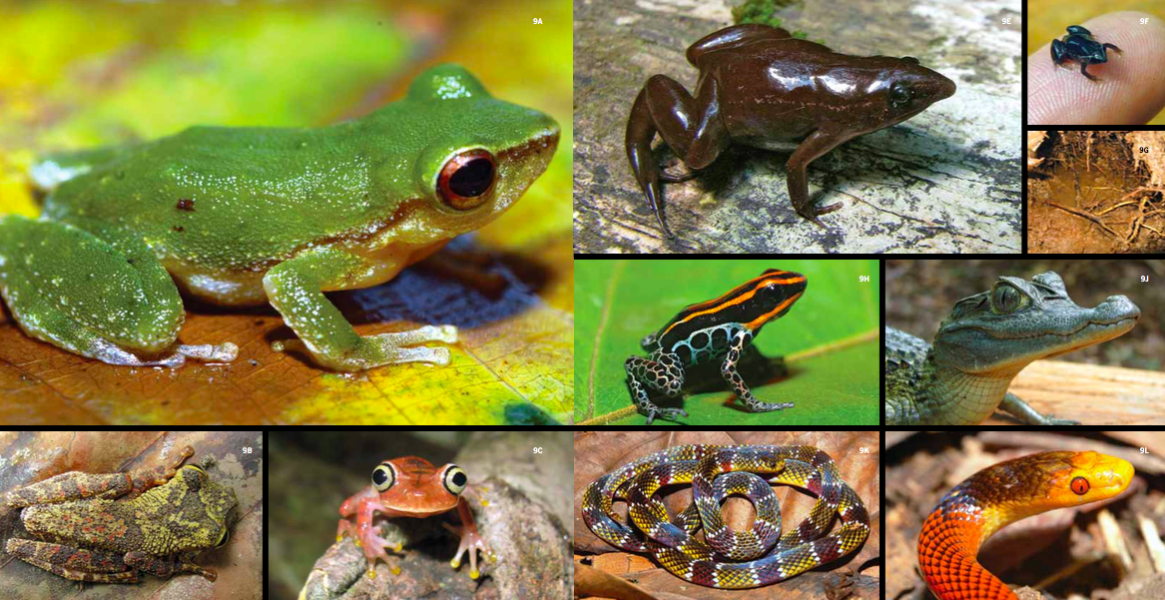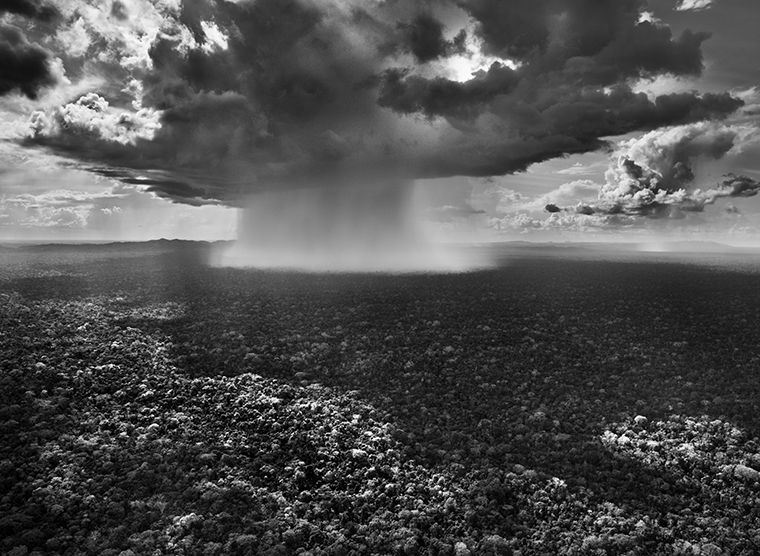
- The world’s greatest tropical rainforest continued to come under pressure in 2021, due largely to the policies of Brazilian President Jair Bolsonaro.
- Deforestation rates hit a 15-year-high, while fires flared up again, combining to turn Brazil’s portion of the Amazon into a net carbon source for the first time ever.
- The rainforest as a whole remains a net carbon sink, thanks to conservation areas and Indigenous territories, where deforestation rates remained low.
- Indigenous communities continued to be hit by a barrage of outside pressure, from COVID-19 to illegal miners and land grabbers, while community members living in Brazil’s cities dealt with persistent prejudice.
The world’s greatest tropical rainforest continued to come under pressure in 2021, due largely to the policies of Brazilian President Jair Bolsonaro. Deforestation rates hit a 15-year-high, while fires flared up again, combining to turn Brazil’s portion of the Amazon into a net carbon source for the first time ever.
But the rainforest as a whole remains a net carbon sink, thanks to conservation areas and Indigenous territories, where deforestation rates remained low — underscoring once again the key role of Indigenous peoples as the best stewards of the environment.
Indigenous communities continued to be hit by a barrage of outside pressure, from COVID-19 to illegal miners and land grabbers, while community members living in Brazil’s cities dealt with persistent prejudice.
For the Amazon, 2021 was yet another year under the pandemic where the onslaught against nature never seemed to end.

Deforestation continues, surging at year’s end
Deforestation continued in the Brazilian Amazon, surging at the year’s end to reach its highest level since 2006. Agriculture is the primary culprit. In the Amazon, forests are cleared and burned largely to make way for cattle and soy.
More than 13,235 square kilometers (5,110 square miles) of rainforest — an area three times the size of the city of São Paulo — was cleared between Aug. 1, 2020, and July 31, 2021, according to data released by the Brazilian government in November.

This year, Mongabay reported on forest loss driven by illegal logging, palm oil, mining, roads, and some unlikely offenders, including açaí (the fruit in your smoothie bowl) and ayahuasca.
Most of the deforestation in Brazil was clustered around roads. Satellite-based mapping of seven of Brazil’s nine Amazonian states shows the “terrifying” progression of logging toward the core of the Amazon. Experts say that lack of transparency around logging makes it difficult to determine how much of that logging is illegal.
And so did the fires
After the slash comes the burn. Fires don’t occur naturally in the Amazon, but are set deliberately to clear felled trees and plants, making way for crops and cattle.
Overall, 76% of Amazon fires in 2021 occurred in Brazil, followed by 13% in Peru and 11% in Bolivia, according to data from Amazon Conservation Association’s Monitoring of the Andean Amazon Project (MAAP).

Some 519,000 hectares (1.28 million) acres burned in the Brazilian Amazon between May 19 and Oct. 31, 2021, according to MAAP — an area about three-and-a-half times as big as London or Delhi. Most of the fires were set illegally on cleared lands, but 2020 and 2021 saw a marked increase in the number of fires burning in standing rainforest.
In April, the Brazilian government ended Operation Green Brazil, a military-led campaign to tackle illegal burning in the Amazon. The operation, at a cost of $71 million, has had “no meaningful results,” experts say and leaves the region vulnerable to the pressures of economic development.

The Brazilian Amazon is a carbon source
The Brazilian Amazon is now a carbon source, emitting more of the greenhouse gas than it captures, according to a study in which researchers report more than 20 years of atmospheric measurements. However, the total Amazon remains a net carbon sink, thanks largely to protected areas and Indigenous territories.
The forest-to-savanna tipping point is looming, leading scientists say. They predict that if an additional 3-8% of forest is lost, the Amazon may be unable to create its own rain, worsening droughts and creating greater tree mortality, which, in addition to releasing massive amounts of stored carbon, may cause the forest to transition to a dry, savanna-like ecosystem.
A study on the impacts of savannization on more than 300 mammal species found that this forest-to-savanna transition would drastically change the makeup of both animal and plant communities. Some species, such as primates, could lose up to 50% of their range by the end of the century.
Already, Amazonian birds are shrinking in response to climate change, according to a recent study.
Indigenous territories hold out, but for how long?
Amid the destruction, protected areas and Indigenous territories safeguard the forest.
Indigenous communities in the Amazon have continued to demonstrate their leadership as forest defenders by monitoring their territories against invasion, recalibrating their relationship with fire, and strengthening their conservation and monitoring technologies. However, continued invasions, disease, and a lack of government support are testing the limits of these communities.

“Why are we the ones dying, after 500 years holding down the forest? The moment that Indigenous peoples say enough, and decide to exploit [territorial] resources, who’s going to hold them back? I’m very afraid that this will happen, that we will reach a breaking point when Indigenous people will get fed up,” Henrique Iabaday Suruí, a Paiter Suruí leader in Rondônia state, told Mongabay contributor Shanna Hanbury, a Brazilian journalist who has reported extensively on the Amazon.
The march of land grabbing, deforestation, fire, logging and mining threatens “uncontacted” or voluntarily isolated Indigenous groups.
Nearly half of mining requests registered through the National Mining Agency in the Brazilian Amazon were located in Indigenous territories with uncontacted groups, according to a recent report. The approval of Brazil’s Bill 191/2020 would allow mining on Indigenous land, which is currently prohibited under the Constitution. If enacted, mining activities could be detrimental to up to 43 uncontacted Indigenous groups.

Overflight images show land invasions ramping up in the Piripkura Indigenous Territory in Brazil and illegal cattle ranches expanding into the protected land of “one of the world’s most vulnerable uncontacted Indigenous groups.”
An illegal logging route in Peru’s Ucayali region cuts through the Sawawo Indigenous Reserve and threatens dozens of Indigenous territories with deforestation, drug trafficking and river degradation.
This year, Mongabay also reported on the extreme prejudice and discrimination faced by Indigenous people in Brazilian cities.
COVID-19 affects health and communities
In Brazil, as of Dec. 28, more than 618,000 people have died of COVID-19, according to the WHO’s COVID-19 dashboard. Smoke from fires compounds what is already one of the worst burdens of coronavirus infections and deaths in the world.
Wildfire smoke has been linked to higher COVID-19 mortality rates. Data from the largest air-quality monitoring network in the Amazon, in the southwesten Brazilian state of Acre, showed that during the peak burning seasons in 2019 and 2020, the rates of particulate matter hovered well above the level recognized by the World Health Organization as clean and safe for breathing.
Indigenous populations are particularly at risk for COVID-19, suffering mortality rates 1.5 times the average in Brazil. According to data from June 22, 2021, Indigenous communities recorded more than 121 deaths, including those of many important leaders.

“Traditional Indigenous communities have been hit hard by Brazil’s poor management of the worst pandemic in 100 years.” Maurício Angelo reported for Mongabay. Amid the pandemic, he wrote, Indigenous people have “reinvented grief.”
The Afro-descendant quilombo communities in the Brazilian Amazon have also been heavily affected by the pandemic, “amplifying the impacts of pollution, encroachment and lack of health care that they have long struggled with,” according to a March 2021 Mongabay report.
Policies worsen environmental destruction
“Under Bolsonaro … environmental agencies were gutted, with 2021 budgets reaching a 21-year low,” Shanna Hanbury reported in February. “Retaliation against efficient environmental agents by the administration became commonplace; those still keeping their jobs today are afraid to speak out.”
Brazil’s controversial environment minister, Ricardo Salles, was ousted on June 23, 2021, after being named in an investigation surrounding alleged illegal exports of Amazon timber. Critics say his policies contributed to rising deforestation rates in the Amazon.
Several bills under deliberation in Brazil threaten to exacerbate environmental issues in the Amazon. Bill 2633/2020 would make it easier for people to get titles to public land and grant amnesty to those who have illegally occupied land. Bill 490/2007 would change demarcation rules for Indigenous reserves, opening them up to mining, and ease concessions inside public forests. And Bill 984 would create a road along the border of Iguaçu National Park.
“Experts say the numbers indicate that the Bolsonaro administration’s policy of ‘running the cattle’ — through the systematic introduction of deregulatory bills and weakening of environmental laws — is leaving a trail of biodiversity destruction and rendering forest communities more vulnerable than ever,” Débora Pinto reported for Mongabay in July.
Some good news
In Peru’s Amazonian department of Loreto, the amount of territory covered under some category of conservation increased from 2 million hectares to 8.5 million hectares (4.9 million acres to 21 million acres) this year — an area about three times the size of Belgium.
Five bird species in Brazil have been saved from extinction through direct human intervention: the Alagoas antwren (Myrmotherula snowi), the Alagoas curassow (Pauxi mitu), the red-billed curassow (Crax blumenbachii), the Lear’s macaw (Anodorhynchus leari) and the Spix’s macaw (Cyanopsitta spixii).

In the Piagaçu-Purus Sustainable Development Reserve in the state of Amazonas, Brazil, a large population of manatees seems to be recovering while living alongside human communities.
Brazilian photographer Sebastião Salgado traveled the Amazon for six years capturing images of nature and the people in world’s largest rainforest for his new book, Amazônia.
“My wish, with all my heart, with all my energy, with all the passion I possess, is that in 50 years’ time this book will not resemble a record of a lost world,” Salgado says of Amazônia, which he has dedicated to the Indigenous people of the forest. “Amazônia must live on.”


Banner image of a fire line moves through a degraded forest area in an undesignated public forest area in Porto Velho, Rondônia state, Brazil on July 29, 2021. Photo © Christian Braga / Greenpeace.
Liz Kimbrough is a staff writer for Mongabay. Find her on Twitter @lizkimbrough
FEEDBACK: Use this form to send a message to the author of this post. If you want to post a public comment, you can do that at the bottom of the page.
Mongabay’s top Amazon stories from 2021
Source: Trends News

0 Comments